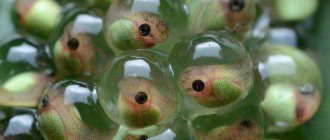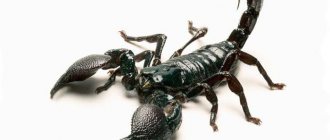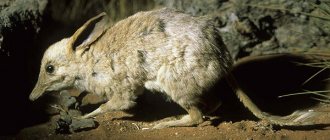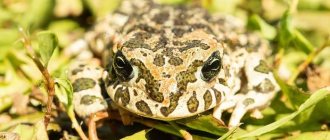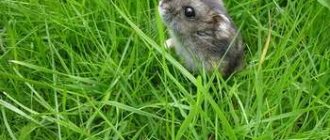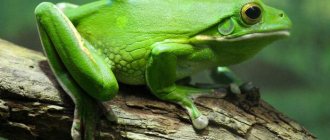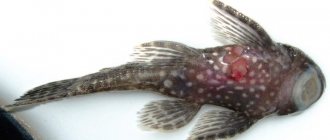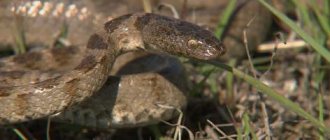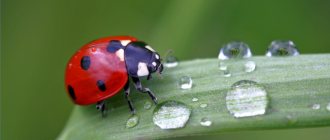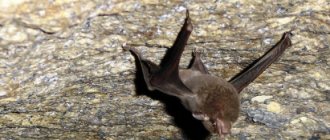Description of rats
Rats are the most common mammals of this family. They can be found anywhere on our vast Planet. Despite their belonging to the family, rats differ from mice not only in appearance, but also in their behavior. In addition, rats are much larger in size compared to mice. Their body is more developed, the muzzle is more elongated, and the nose is more elongated. The rat's eyes are relatively small, like beads.
In case of danger, these rodents begin to secrete a strong-smelling secretion, thanks to which the rest of the family becomes aware of the danger. Despite their size, their body structure is such that they are able to fit through small holes, which make up about 25 percent of the total body girth.
Appearance
These representatives of the mouse family have a body structure characteristic of rodents, which is quite powerful and oval in shape. Adults grow from 8 to 30 cm in length, while their weight can range from 40 to 510 grams. There are species that differ markedly from their counterparts, depending on species characteristics, as well as on their habitat.
The rat's muzzle is pointed and elongated, with small eyes and ears. In most varieties, the tail is completely naked, covered with scales and sparse hairs. Black rats are distinguished by the fact that their tail is completely covered with thick black hair. As a rule, rats have a rather long tail, the size of which is commensurate with the length of the body, and sometimes exceeds this indicator. Although it should be noted that there are also short-tailed rats.
The jaws of this rodent are armed with pairs of incisors, which are noticeably larger than the teeth. The molars are arranged in dense rows, which allows the rodent to quickly and actively grind food. Between the incisors and molars, you can observe an area where teeth do not grow. Rats do not have fangs, although they are omnivorous mammals. A rat's incisors are constantly growing, which requires constant grinding, otherwise the animal will not be able to fully close its mouth. This is due to the fact that the incisors do not have roots. The front part of the incisors is much stronger than the back part, since it is covered with durable enamel. As a result, the grinding of the incisors does not occur evenly, and over time they acquire a chisel-like shape. The teeth of these animals are so strong that the rat can easily cope with obstacles in the form of brick or concrete, although they were originally intended by nature to obtain exclusively plant food.
Interesting to know! Rats have a fairly thick and dense coat, thanks to well-defined guard hairs. The color of the coat can be different, both grayish-brown and dark gray, with the presence of various reddish, orange or yellow shades.
Although rats have calluses on their paws, they are poorly developed. Due to the presence of calluses, many animals move quickly on any surface. This deficiency in rats is compensated for by tenacious and mobile toes. Therefore, rats can lead both a terrestrial and semi-arboreal way of life. They easily move through trees, so they build their nests in tree hollows or use ready-made nests of other animals and birds, left by them for various reasons.
Behavior and lifestyle
Rats are considered incredibly agile living creatures and incredibly resilient. For animals of this size, they run well, picking up speeds of up to 10 km/h, while overcoming obstacles up to 1 meter high. These rodents travel an average of 12 kilometers every day. They are excellent swimmers and divers, so they can easily catch fish. Without harming their health, rats can stay in water for up to 3 days, or even more.
Burrows abandoned by other animals, as well as artificial shelters and nests of various birds can serve as a refuge for rodents. If necessary, the rat is able to dig a hole for itself on its own.
Rats can easily lead an isolated lifestyle or form family groups, as well as territorial communities. A colony may contain several hundred individuals, which are subordinate to one dominant male and several dominant females. Each such group is capable of controlling an area of about 2 thousand square meters.
Rats have poor vision, characterized by a small viewing angle of about 16 degrees, so the rat constantly rotates its head in different directions, studying the space around it. It is believed that rats perceive the surrounding space in gray tones, and continuous darkness appears as red.
Interesting fact! The rat has a well-developed sense of smell and hearing, so animals are able to hear sounds with a frequency of up to 40 kHz.
Rodents are capable of distinguishing odors at short distances. It should be noted that they can withstand radiation up to 300 roentgens per hour without any problems.
How long do rats live?
This indicator is directly related to species. If we take gray rats, then under natural conditions their average life expectancy is no more than one and a half years, although some individuals live up to 3 years.
If you take black rats, they live less than a year. When living in laboratories at various scientific institutions, rats live 2 times longer. The Guinness Book of Records contains information about the oldest rat, which managed to live for almost 8 years.
TOP 5 scary facts about rats
Sexual dimorphism
Upon reaching one and a half months of age, the animals’ sexual characteristics are fully formed. To determine whether it is a female or a male, it is enough to raise the tail to determine the structure of the animal’s reproductive system.
Males differ from females:
- By the presence of fairly large testicles, which can be detected if you lift the animal's tail.
- Males do not have nipples on their bellies like females. They are arranged in 2 rows.
- In males, the distance between the anus and the urethra is slightly greater.
- Males are stronger and more powerful, and they are also larger in size.
- Males have a pear-shaped body, while females have a graceful and elongated body shape.
- Males have denser and tougher fur, while females have smooth, soft and silky fur.
- Males are less aggressive than females.
- The urine of males has a sharper and more unpleasant odor.
As for newborn rat pups, it is almost impossible to determine their gender. Although experts know that males who have just been born have small spots between the anus and genitals. Over time, testicles appear in place of these spots.
Important point! According to experts, one pair of adult individuals in a couple of years is capable of producing offspring of up to 6 thousand cubs. Rats, having reached puberty, reproduce no less actively.
Body structure
Experts say that street rats have the ability to adapt and survive in almost any environment. But despite all this, they have very poor eyesight. This is explained by the structure of the lens. The structure of the lens makes it possible to see everything that surrounds it at an angle of 16º. To see much more, the rat is forced to constantly turn its head. They see almost everything that surrounds them in gray. They also have the ability to see the bluish-green part of the light spectrum. In red they see complete darkness.
Rats have very well developed senses of smell. Despite this, animals are not able to use this feature over long distances. This characteristic of the organism can be explained by the fact that evolution and natural selection determined it this way. The life of these animals occurs in such conditions that they simply do not need to have a higher sense. Despite this, at short distances, rats are very good at distinguishing all odors. They constantly examine each other using their sense of smell to understand who is nearby - their own or someone else's.
There are different types of rats
A certain feature is observed in the structure of the hearing organs. Rats can hear sounds even at frequencies around 40,000 Hz. Animals react very quickly even to the quietest noises. A very interesting fact is that pure sounds are not perceived by their ears at all.
Communication occurs with the help of a characteristic squeak. Rats have the best developed sense of touch. This has been confirmed through special studies. Special vibrissae act as organs of touch - these are small sensitive hairs. There are a lot of these hairs on the face.
Rodents have a very clear understanding of the tastes of food. In this respect they are not at all different from other existing species of mammals. The ability to distinguish taste is explained by the presence of small filiform papillae on the surface of the tongue. At the top they are covered with a special keratinized epithelium. This makes it possible to better retain food in the mouth. Rats have very well developed salivary glands, and the parotid, submandibular and sublingual glands are considered the most developed. The functioning of these glands ensures the production of saliva in the oral cavity, which is necessary for digesting food and wetting dust particles. Rodents need to wet the dust with saliva when they are setting up their home, or rather digging a hole.
These rodents have very strong teeth
Types of rats with photos and names
The genus “Rats” includes several dozen species that represent certain groups. Some of the species are considered extinct today.
Species groups include:
- Norvegicus;
- Rattus;
- Xanthurus;
- Leucopus;
- Fuscipes.
It makes sense to focus on the following types:
Gray rat, or Pasyuk (Rattus norvegicus)
It is considered the largest representative of this species. Pasyuki are found in quite numerous groups on the territory of Russia. The species was introduced accidentally, but is a true synanthrope. Pasyuki grow up to a maximum length of 25 cm, with a maximum weight of almost 400 grams. The tail is relatively short, the muzzle is wide and has a blunt ending. Juveniles are gray in color, and with age the coat acquires a noticeable reddish tint. The guard hairs are shiny and long. The belly is lighter in color.
Black rat (Rattus rattus)
It is slightly smaller in size compared to the gray rat. Its muzzle is narrower, its tail is longer and its ears are large and rounded at the end. Rats grow up to a maximum of 21 cm and weigh no more than 300 grams. The tail of these rodents is covered with thick hairs. The main color of the animal is black-brown with a greenish tint, which extends more to the back area. The sides of the rat are lighter, and the belly is dark gray or ashy. Some individuals have a color similar to the gray rat, but their back is lighter, yellowish in color.
Small rat (Rattus exulans)
This rodent belongs to a species that is also quite widespread. The species differs from other species in its small (comparatively) body size. The maximum length of the body is in the range of 11-14.5 cm, and the maximum weight averages 70 grams. This rodent has a compact body, a sharp muzzle, large ears and a brown coat.
Long-haired rat (Rattus villosissimus)
The name itself suggests that the rodent has long hair. In addition, this species has a high reproductive rate. Adults grow up to 19 cm in length, with a tail length of about 15 cm. The average weight of the animal is in the range of 120-150 grams, depending on gender.
Kinabuli rat (Rattus baluensis)
It belongs to a very unique species that has a symbiotic relationship with the tropical carnivorous plant "Nepenthes Raja". This rather large plant secretes a sweet secretion, which attracts the rat. In return, the rats leave their excrement for the plant.
Turkestan rat (Rattus pyctoris)
It is a typical inhabitant, which is distributed in countries such as Afghanistan, Nepal, China, India, Pakistan, Iran, Uzbekistan and Kyrgyzstan. Adults grow up to 17-23 cm and their tail length is almost equal to their body length. The animal's abdomen is yellowish-white, and the back area has a reddish-brown tint.
Silver-bellied rat (Rattus argentiventer)
This variety is not distinguished by its wide distribution on the planet. Its coat color is characterized as ocher-brown, with the presence of a small amount of black hairs. The belly is colored gray, while the sides are light and the tail is brown. The length of adult individuals can reach 40 cm or slightly more, weighing up to 200 grams maximum.
Furry-tailed rabbit rat (Conilurus penicillatus)
It has an average body size, reaching 22 cm. The animal weighs about 185 grams. Often in individuals the tail length is longer than the body length. A tuft of hairs grows at the end of the tail. The color of the dorsal part is grayish-brown, with black hairs. The hind legs and belly are almost white. The coat is quite hard and not very thick.
Soft-furred rat (Billardia meltada)
Refers to typical representatives living in countries such as Nepal, India, Sri Lanka, Bangladesh. The length of adult individuals is in the range of 90-190mm, while the length of the tail can be in the range of 70-180mm. The species is distinguished by the fact that it has soft and silky fur, grayish-brown on the back and white on the belly. The upper part of the tail is dark gray.
Tan Rat (Rattus adustus)
This species became known a little over 70 years ago and was classified as an exceptional species. As far as is known, the species received its name due to the exceptional color of its coat.
Interesting fact! Rodents communicate with each other using ultrasonic waves. Their hearts beat at a rate of 300-500 beats per minute.
5 Biggest Rats in the World
Cell selection
In order for your pet to feel great, you need to purchase a spacious cage with a set of all the necessary accessories and balanced food. You should always remember that the cage for a fluffy rat plays a very important role, since he spends most of his life in it. Therefore, when choosing a cage, you should be guided by the following requirements.
Cage dimensions
It is not recommended to keep your pet in a cramped cage, as the animal likes to move a lot. As a rule, the optimal cage dimensions are within the following limits: cage width – 40 cm, cage length – 60 cm and cage height – also 60 cm. For such an animal, this space is absolutely enough. The distance between the cage bars should be no more than 1.2 cm.
bottom of the cage
For such rodents, a solid floor is more suitable, since a lattice floor leads to injuries to the rodents’ limbs.
Cage tray
The starting material for the pallet is durable plastic. The pallet should have high sides to prevent the filler from spilling out. The pallet should not be made of wood, since wood will absorb urine, which will cause an unpleasant odor in the home.
Cage design
The best option is a collapsible cage with large doors to make it convenient to clean, wash, feed and hang various elements. The cage must have shelves for animals to rest.
Cage coating
As a rule, cage rods are coated with enamel, zinc or powder paint, which is not critical. The main thing is that the coating is of high quality, without chips or rust.
Natural habitats
Rats can safely be called animals that appeared on earth even before man appeared on it. They are found in almost all corners of our Earth. Depending on the species, they are found both within the Euro-Asian continent and within other continents, including Australia, the Malay Archipelago, New Guinea, etc.
Yet their habitat is limited to northern, cold regions. Within central Russia there are no more than 2 species of rats - gray and black. If necessary, a rat can cover up to fifty kilometers in one day.
Rats are mammals that easily adapt to fairly difficult living conditions, which is why rats are often found at abandoned research stations in Antarctica.
Lifestyle
Rats are the most common animal in the world. They are not found only in the Arctic and Antarctica. These rodents are characterized by group living, with hundreds of individuals in one family. The community is controlled by an alpha male and 2-3 females. Each group of animals controls a territory of up to 2000 sq.m.
Rat families have specific habitats. Most animals prefer to stay close to humans, feeding on leftover food or supplies taken from storage.
Rat diet
Rats are considered omnivorous rodents, but their diet depends on their living conditions, which is directly related to their lifestyle. Each animal needs about 25 grams of feed per day. At the same time, the lack of food is very difficult for animals to tolerate. As a rule, after three days, without food, the animal dies. The absence of water is even more difficult for animals. To maintain normal functioning, rats need to drink up to 35 ml of water per day.
The physiological characteristics of rats are that they are more adapted to the consumption of food items with a high protein content. Therefore, it is quite natural that they simply need animal food. Gray rats never prepare food for future use. The diet of black rats is mainly related to plant foods.
Black rats eat:
- Nuts and seeds of various plants.
- Chestnuts.
- Cereal grains.
- Fruits of various plants.
- All kinds of greens.
When rats settle not far from human habitation, they feed on any food they have access to. Those rats that live far from human habitation are able to feed on small rodents, mollusks, amphibians, bird eggs and their chicks. Those species that live on the coast feed on gifts from the seas and oceans washed ashore by waves.
Important point! Rats have an excellent sense of fullness, so they never overeat, even when very hungry.
Use as pets
Thanks to their natural intelligence, rats are easy to train. Most often, gray rodents become pets.
Caring for rats is not difficult. The animals are friendly and clean, but when feeding your pets you should follow moderation and listen to the advice of specialists and a veterinarian.
Important! Such rodents should not be kept alone. These animals are accustomed to living collectively; they feel good only in the company of their relatives.
Reproduction and offspring
Rats, regardless of species, reproduce at a very high rate. This is also due to the fact that they quickly reach puberty. Females bear their offspring over short periods of time. A sexually mature female can mate every 5 days, with the exception of the period of pregnancy.
Within 1 year, each adult female gives birth to up to 4 dozen rat pups, while pregnancy lasts about 3 weeks. Having reached the age of one and a half years, females are approaching the period of menopause, which at the initial stage appears irregularly, and then the female is no longer able to reproduce.
Before the end of the pregnancy period, the female tidies up her nest. She lines the bottom of the nest with soft grass. Sometimes the female digs a new hole, after which she takes care of its arrangement. Often in this nest the female contains food reserves, thanks to which she can stay with the newborns for a long time without any problems.
Depending on the species, female rodents can reproduce from 8 to 15 young at a time. Rats are born naked, blind and deaf, with completely closed ear canals, and without a well-functioning thermoregulation system.
After birth, they are not able to independently remove processed components. Therefore, the female constantly licks her stomach with it, as if giving a massage, which helps to activate metabolic processes. The cubs feed on mother's milk, the fat content of which reaches 9 percent. Unfortunately, rats are capable of destroying their offspring, and males are more prone to this. As for females, they can eat dead cubs or very weak ones.
Interesting to know! Domestic rats can mate with black rats, but their offspring do not survive, and quite often the mother's body completely rejects the embryos, and often non-viable offspring are born.
After some time, fur appears on the body of the rat pups, and after a week they begin to see and hear. On the ninth day, the first incisors erupt in the juveniles. After 3 weeks, the young offspring independently explore the nearby territory, and after another week they are ready for independent life. They become fully mature by the age of one year.
Rat head
The head of a rodent has the following features:
- quite large in size;
- elongated shape;
- pointed nose;
- rounded miniature ears;
- small eyes.
The rat's head has two parts - front and back. It is separated from the rat's body by the neck. The rodent's ears are shaped like a movable shell. The auditory canal runs through its base along the temporal bone.
Population and species status
Since the beginning of the third millennium, black rat populations have declined markedly and become fragmented. According to experts, black rats have begun to be replaced by more fertile gray rats (pasyuki). And yet, despite the high fertility, rat populations do not go beyond the “Red Line”, since their numbers are controlled by a number of important factors.
Firstly, the number of these animals directly depends on the availability of food and shelter. Lack of food immediately leads to a decline in population. In addition, there are special rat control services. The number of these animals is constantly declining as a result of certain diseases, as well as hunting by many predators. Therefore, despite their high fertility, which leads to constant surges in their numbers, natural factors, as well as rat control services, are doing their job.
Today, most species of rats are not even close to the risk zone, although there are very rare species that are protected. As a rule, the number of rare species largely depends on the life activity of people, who are developing more and more new territories that are related to the natural habitat of these species.
Franklin Island is home to a very rare species of “House Rats.” Due to the fact that the species lives in a limited area, it is classified as an endangered species. Currently, only about 2 thousand individuals live in this territory. Annual deforestation and fires can reduce kangaroo rat populations.
Danger to humans
The confrontation between humans and rats has lasted for thousands of years. In our time, such a struggle has received an official name - rodent control. Despite its notoriety in Europe and many other countries, including the Americas, in some countries of the East this rodent received the status of a divine animal that symbolizes wealth, wisdom, prosperity, etc. The negative image of this rodent is associated with several plague epidemics in Europe, which were carried by rats.
Important point! Rats are involved in serious economic losses that are associated with spoilage and consumption of various types of goods, both food and other purposes. These rodents damage the insulation of electrical networks, which leads to fires that claim the lives of many people, not to mention damage to property.
Some species of rats cause serious damage to agricultural crops because they simply destroy crops. Therefore, in such conditions, people resort to various methods of protecting crops from rodent invasion. In some cases they are simply scared away, and in others they are physically destroyed. Currently, rats pose a serious threat to the health of all humanity, since these rodents carry pathogens of dangerous diseases. The danger of their vital activity also lies in the fact that these rodents are able to completely unnoticedly penetrate into a human home through sewage and ventilation systems.
Despite the constant and serious fight against rats and other rodents, it has not yet been possible to completely destroy them, but it is still possible to control the populations of these pests.
Experts have established certain norms for deratization, which is associated with the optimal percentage of freeing the territory from rodents.
Therefore it is considered:
- 80% – the result is satisfactory.
- 90% is a good result.
- 95% is an excellent result.
In this regard, it is generally accepted that the task of special deratization services is to maintain in a certain area an acceptable percentage of rodents that would not be able to cause much damage to human life.
Natural enemies
Rats try to avoid “communication” with representatives of canines and cats, as well as snakes and snakes. Their real enemies are: kites, eagles, owls. If foxes or beavers live in the region where rats live, a real war begins between them and the rodents.
In India, mongooses actively fight toothy pests. Some countries of the world (Japan, Colombia, New Zealand) periodically experienced an overabundance of breeding rats, threatening to destroy the entire harvest. In such cases, cats always came to the rescue, which were specially brought into the country to establish biological balance.
